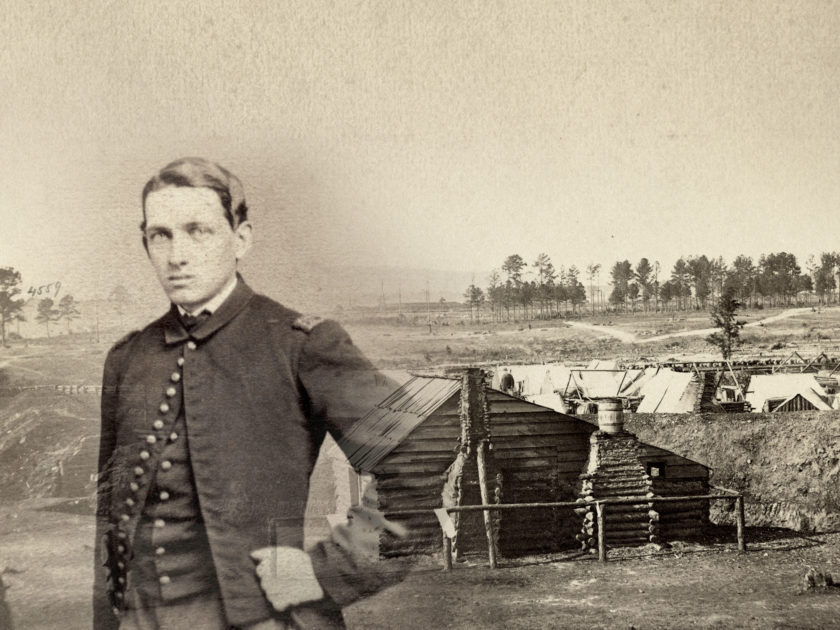
Two 58th Pennsylvania Infantrymen numbered among the mass of Union troops who struggled up and out of the deep ditch at the base of Fort Harrison under heavy fire on Sept. 29, 1864. They made quite a pair. Sword-wielding Cecil Clay, a clean-shaven and college educated fraternity boy, captained Company K. Alongside him stood Pvt. William C. “Billy” Bourke of Company B, a sandy-haired laborer born in England to Irish parents. Bourke grasped a state flag picked up from a wounded color bearer from a brother regiment, the 188th Pennsylvania Infantry.
Clay recalled what happened next. “Side by side we two climbed the parapet, until we could look over into the fort. No sooner had we raised our heads than a ball struck Bourke, cutting a gash across his forehead. He knocked against me, and we rolled back into the ditch together. Bourke was unable to see, as the blood was running into his eyes, so he gave me the colors and with the aid of a sword which I had plunged into the embankment as a footstep he hoisted me up on the parapet once more.”
He continued, “In the meantime the division was stubbornly fighting its way into the fort and the rebels were beginning to retreat when one of them turned and fired two shots at me, drilling a couple of holes in my right arm. Shifting the colors to my left hand, I continued to lead the advance until that hand was shot through also, and I had to stop and lay the colors up against the parapet. Some of the One hundred and eighty-eighth came up at this moment and I handed them their flag, which I had carried throughout the entire charge.”

The Confederate garrison of Fort Harrison fell to Union forces, thanks in part to the courage of Clay and Bourke. The action, part of the larger Battle of Chaffin’s Farm and New Market Heights, went down in the war annals as a Union victory.
A number of men received Medals of Honor for gallantry, including Clay. Promoted to major the next day, he survived the amputation of his right arm, and ended his military service as a lieutenant colonel and brevet brigadier general of volunteers. He went on to a prosperous career as a lumber merchant and later chief clerk of the U.S. Department of Justice. He died in 1903 and is buried in Arlington National Cemetery.
Bourke survived his wound and mustered out of the army in 1866 at the same rank he entered it. He returned to Pennsylvania, married, and worked as a coal miner to support his wife and two children. He died in 1907.

